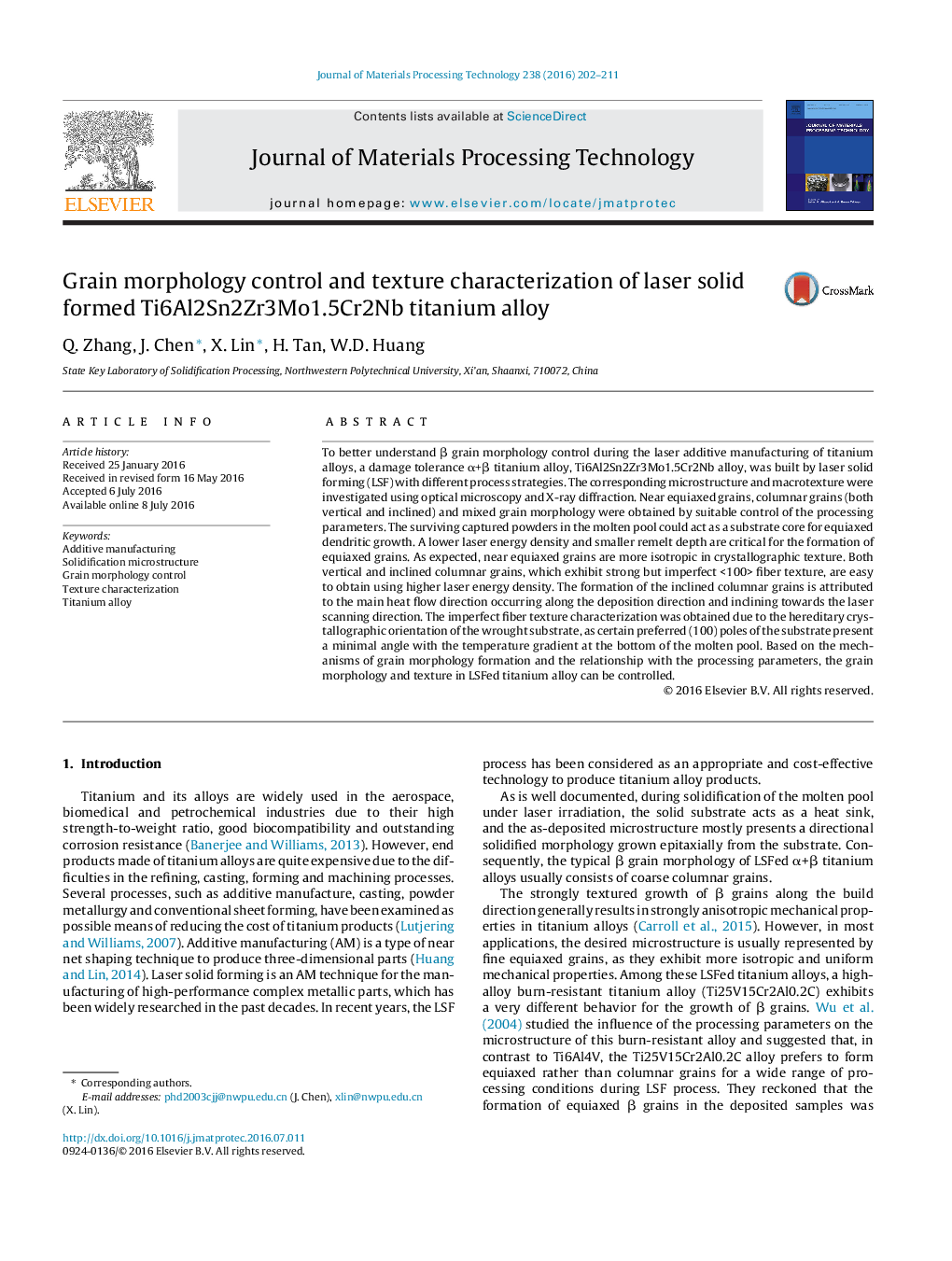| Article ID | Journal | Published Year | Pages | File Type |
|---|---|---|---|---|
| 7176651 | Journal of Materials Processing Technology | 2016 | 10 Pages |
Abstract
To better understand β grain morphology control during the laser additive manufacturing of titanium alloys, a damage tolerance α+β titanium alloy, Ti6Al2Sn2Zr3Mo1.5Cr2Nb alloy, was built by laser solid forming (LSF) with different process strategies. The corresponding microstructure and macrotexture were investigated using optical microscopy and X-ray diffraction. Near equiaxed grains, columnar grains (both vertical and inclined) and mixed grain morphology were obtained by suitable control of the processing parameters. The surviving captured powders in the molten pool could act as a substrate core for equiaxed dendritic growth. A lower laser energy density and smaller remelt depth are critical for the formation of equiaxed grains. As expected, near equiaxed grains are more isotropic in crystallographic texture. Both vertical and inclined columnar grains, which exhibit strong but imperfect <100> fiber texture, are easy to obtain using higher laser energy density. The formation of the inclined columnar grains is attributed to the main heat flow direction occurring along the deposition direction and inclining towards the laser scanning direction. The imperfect fiber texture characterization was obtained due to the hereditary crystallographic orientation of the wrought substrate, as certain preferred (100) poles of the substrate present a minimal angle with the temperature gradient at the bottom of the molten pool. Based on the mechanisms of grain morphology formation and the relationship with the processing parameters, the grain morphology and texture in LSFed titanium alloy can be controlled.
Related Topics
Physical Sciences and Engineering
Engineering
Industrial and Manufacturing Engineering
Authors
Q. Zhang, J. Chen, X. Lin, H. Tan, W.D. Huang,
